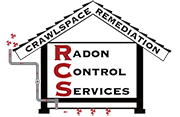
Learn the facts about this silent killer
Radon is a radioactive gas that is invisible, tasteless, and odorless. Released naturally into the air by rocks, water, and soil, radon can get trapped and build up in your home. Radon poisoning is one of the leading causes of lung cancer in the U.S., second only to smoking.



History
Indoor radon mitigation efforts have been in place since the 1970s, but it wasn’t until a widely-publicized tragedy in 1984 that the wider public became aware. A factory worker had a high level of radioactive contamination. Radon in his basement was found to be responsible.
The effects of radon have been known for much longer, though radon wasn’t identified as an element until 1899. As early as the 1500s, miners were dying from a disease later known to be lung cancer. For hundreds of years, miners would take precautions to ventilate mine shafts to try and mitigate the danger.
Dangers
Long-term exposure to radon greatly increases the risk of lung cancer. While the exact numbers are still being tested, radon exposure is the second-leading cause of lung cancer. Roughly 21,000 people a year die in the U.S. alone from radon-induced lung cancers. The effects are cumulative over time. Radon exposure early in life can lead to lung cancers later.
Radon is naturally released by soil, water, and rocks. Various environmental factors, such as snowfall, can trap radon and increase levels in surrounding areas. In homes, radon will most commonly seep in through your basement, but it can affect above-ground homes too!






What Can Be Done?
Radon mitigation is an important step to ensure the safety of your family and loved ones. Indiana is a high-risk region for radon. If you do have high radon levels, Radon Control Services has your back.


